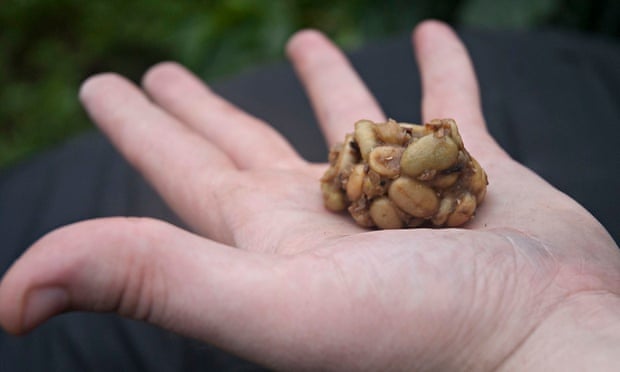 |
| Coffee beans most recently produced by the civet cat. (Image courtesy of The Guardian) |
The most expensive coffee in the world is called Kopi Luwak,
which comes from the island of Bali in Indonesia. It retails at about
$100 per pound of grounds. It’s got a devoted following among those who
swear the taste is distinct enough that the high price is worth it. The
flavor is attributed not to the trees where the Kopi Luwak is harvested, or the
climate. Credit goes to the Asian palm civet, also known as the civet cat
(which is not actually a feline). The civet cat processes coffee beans
the only way a civet cat can: it eats them. Well, they don’t eat
the beans, per se, so much as they swallow them whole. Then the beans
are… excreted. That’s as nicely as I can put it.
Yes, this is civet cat poop coffee, and people actually
drink it. The fans of Kopi Luwak insist that it tastes like nothing else,
and that’s probably true. Why is it different? The reasoning is
that the civet cats will select certain kinds of coffee beans in the first
place, which leads to a particular selection that no human is probably capable
of. What no human is definitely capable of is the appropriate
fermentation in the civet cat’s digestive tract, which perfects the flavor of
the beans. These partly-digested beans are then harvested and sold.
Harvesting can be tricky, since traipsing through Indonesian jungles isn’t the
most efficient way to gather anything. Most commonly, the civet cats are
kept in cages and given coffee beans (as well as their natural diet of fruits
and berries). Some producers of Kopi Luwak keep the civet cats on
reserves, letting them wander freely among the trees as they would in
nature. The appeal of this stems from the controversy over caging the
animals and the force feeding of coffee beans in order to increase
production. This practice came to light in 2013, bringing attention to
the high mortality rate in inflicts on the civet cats.
Civet cats aren’t a threatened species, due to their
commercial value, but their wild populations are declining, since Kopi Luwak
producers have incentive to capture them. Civet cats are native to a wide
swath of territory as far west as India and as far east as Borneo and the
Philippines. Demand for this gourmet coffee is leading to their
introduction into islands farther east in Indonesia.
If you ever worry that you’re overpaying for your coffee,
just think of Kopi Luwak and how much more you could pay!
 |
| The Malayan civet cat: aficionado of fine coffee beans. |


Comments